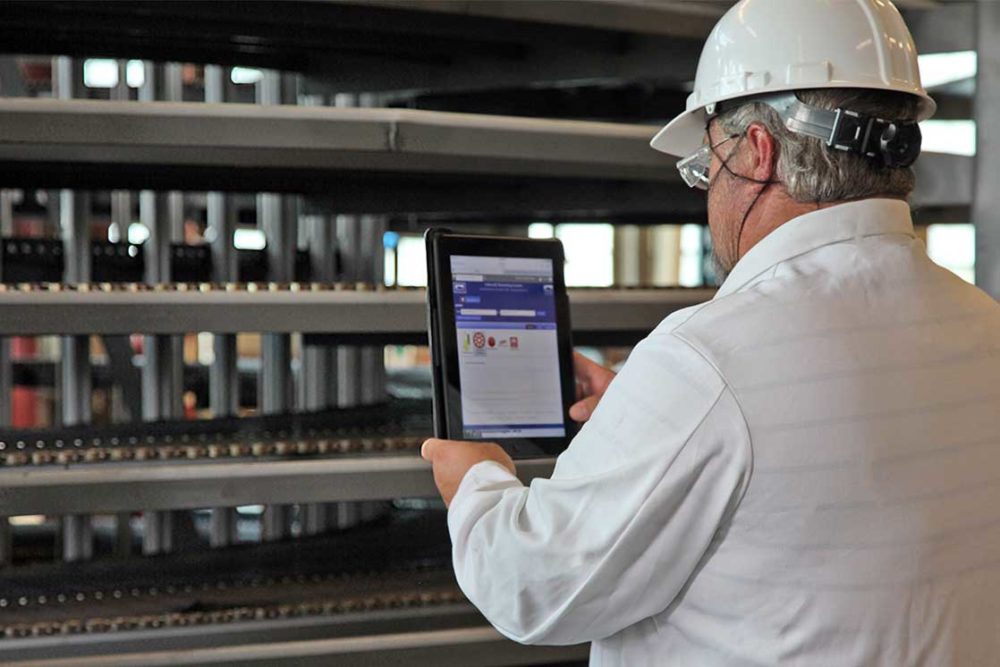Bakeries need proper water temperature and pressure as well as the correct concentration of chemicals and spray pattern for clean-in-place (CIP) systems to remove soils.
These devices are most effectively used on longer spiral conveyors and higher, harder-to-reach ones.
“Note that a CIP device on a belt will not be able to clean the entire conveyor,” said Cari Rasmussen, food safety specialist, Commercial Food Sanitation, an Intralox company. “The sanitation team will need to clean the framework and components that are not affected by the spray device.”
Søren Andersen, managing director, Scanico, a Middleby Bakery company noted proofers can come with a full CIP system or a standard belt-washing system.
“In a Scanico belt-washing system, the belt is washed with spray nozzles at the infeed position to give full belt coverage,” he explained. “Foam is added on top of the spiral, which allows the foam to float downward in the spiral to give full coverage of the belt and the supports.”
Depending on the spiral size, Scanico’s systems have six to 12 zones that can be cleaned individually. A frequency converter controls the pump, allowing it to run CIP circuits with different pressures. Rotating stainless steel nozzles clean the conveyor while injectors add detergents and foam
The CIP system is controlled by the spiral’s PLC, where its programs can be set up to provide multiple cleaning programs with different turnaround times, water temperatures and inspections. Scanico also offers steam sanitation that runs at specific temperatures for a designated time period.
Bobby Martin, executive product manager, AMF Bakery Systems, pointed out that AMF offers an optional CIP belt washer and dryer with all spiral proofers, coolers and freezers.
“The Belt Washer & Dryer is automated to perform the most optimal process for repeated sanitation,” he said.
Kevin Quinn, sales manager, Douglas Machines Corp, said the company’s belt washer saves water compared to manually cleaning.
The Douglas Cyclone-RH model also decreases changeover and downtime while prolonging belt life by reducing buildup of material such as sugar that is abrasive to plastic belts.
[Related reading: Best ways to clean your conveyors the right way]
While CIP provides labor savings, perhaps one drawback is complacency.
“If you have a CIP, you assume it’s going to clean the system. You put it on and run it and do inspections after the fact to check for debris or residual product that didn’t get cleaned off the belt,” said Jonathan Lasecki, chief engineer, Ashworth Bros. “While CIP’s systems are effective, they may not cover 100% of the conveyor.”
The sanitation crew needs to brush out hard-to-reach areas of the spiral cooler or freezer.
“You can clean the belt with CIP, but if you don’t clean the framework and conveyor structure, debris may fall from it onto the belt and be transferred to the product,” Mr. Lasecki cautioned. “Debris from the whole enclosure, not just the food contact zone, could fall and contaminate the belt.”
Kenneth King, commercial support manager, Ashworth Bros., noted the company’s SmartSpiral Monitoring System helps prevent downtime.
“It’s a stand-alone wireless web app that continuously monitors spiral and belt performance, and includes the industry’s first bottom bearing wear sensor,” he said. “If something goes wrong by the minute, Ashworth can text or email operators to say, “You have a problem in this area. You should go out and have a look at it.’ We’ve found issues before that might have caused a catastrophic failure and fixed them without losing major downtime.”
To avoid unpleasant surprises and a potential product recall, don’t forget belts and conveyors when it comes to cleaning and sanitation. Ignoring the least likely suspects is just a problem waiting to happen.
This article is an excerpt from the March 2020 issue of Baking & Snack. To read the entire feature on conveyors, click here.





